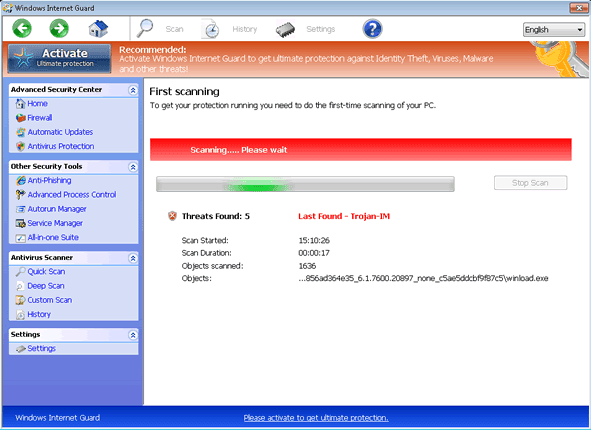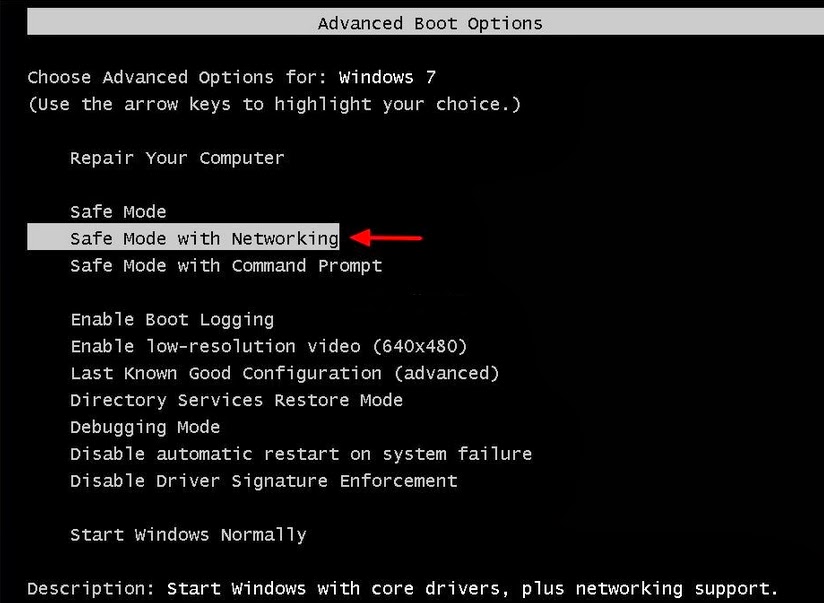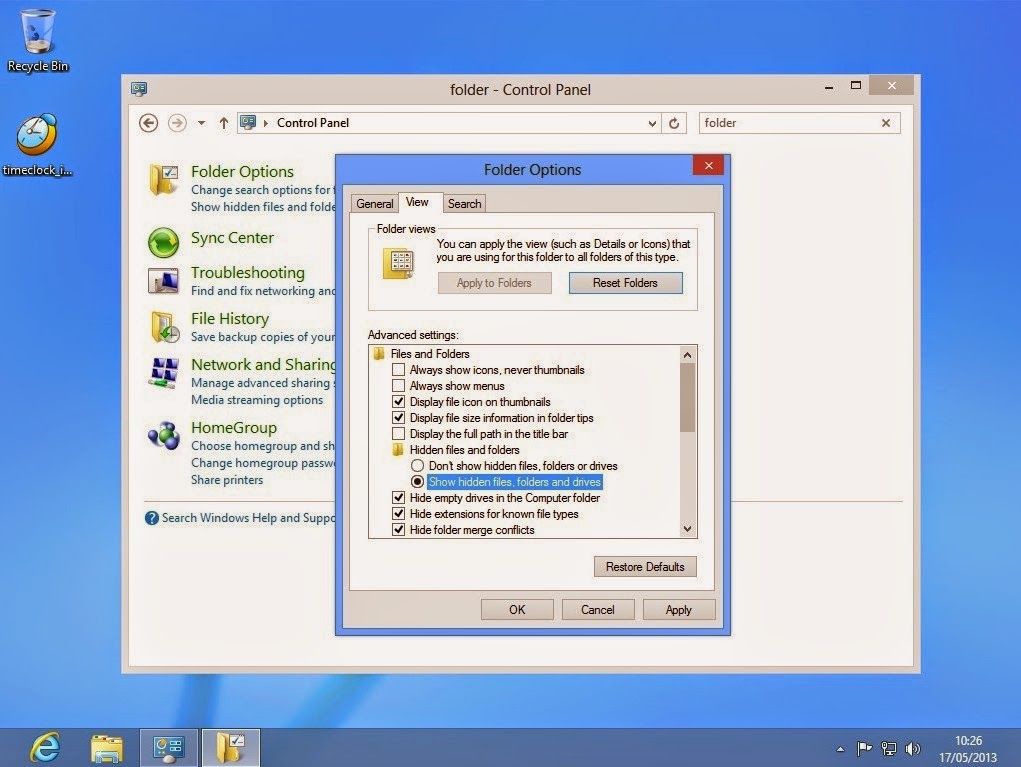Knowledge about Windows Internet Guard
Windows Internet Guard currently meddles with numerous PC users’ regular routine as a dangerous security infection. It has been popularly recognized as a rogue anti-spyware program or scareware designed by cyber criminals to make hazards on affected computer. Much as the name implies, the infection mainly attacks PCs using Windows operating system, especially those are short of appropriate security protection. When installed, it will typically make chaos in affected computer system by technically inserting its malicious codes and files. For instance, Windows Internet Guard rogue virus would directly modify the work of MBR, which has the responsibility for operating system’s bootloader, in order to be loaded up automatically whenever Windows is launched.
Similar as other rogue virus like Windows AntiBreach Patrol, Windows Internet Guard always use fake automated scanners to allegedly check the affected computer system for potentaial security threats. To clean up all “detected” risks, Windows Internet Guard will encourage users to purchase its full licensed version to get ultimate protection. However, the truth is, Windows Internet Guard has nothing to do with the legitimate antivirus services, but is only a fraud tool utilized by hackers for their illegal purposes. Suppose that Windows Internet Guard infection cannot be removed timely from computer, it may even open a backdoor for remote hackers. It is known that a backdoor can often be used to drop additional malware on compromised machine and even provide unauthorized access to Windows for third parties. As result, it is urgent to get rid of Windows Internet Guard virus as long as being informed of its existence.
Screenshot of Windows Internet Guard

Common Symptoms of Rogue Antivirus Program
- A fake antivirus keeps scanning your system and you can't connect to security websites regardless of browser you are using (IE, FireFox, Chrome)
- Google search keeps redirecting to sites with irrelevant content when you try to click on search results
- Someone is using your address book to send spam to your email contacts
- Your firewall and antivirus software won't open or download updates
- Your computer is slower than it should and hangs on Windows boot up with a blue screen
- Browser home page has been set to unknown search engine and you can't change it back
How to Remove Windows Internet Guard Virus
To get rid of Windows Internet Guard infection, many PC users want to use their installed standard virus remover or antivirus application. However, the Windows Internet Guard virus, as many other viruses, is created with malicious code and is changed daily or more often. That's why any of the antivirus programs can't keep up to remove the virus. When victim users tried with various security tools, they did not get rid of the virus, but messed up the computer more. Any unsure method is not recommended to remove the virus, but manual removal has always been the most effective way to get rid of it.
1. Safe Mode with Networking.
To perform this procedure, please restart your computer. -> As your computer restarts but before Windows launches, tap “F8″ key constantly. -> Use the arrow keys to highlight the “Safe Mode with Networking” option and then press ENTER. -> If you don’t get the Safe Mode with Networking option, please restart the computer again and keep tapping “F8″ key immediately.

2. Show hidden files of Windows Internet Guard.
- Open Folder Options by clicking the Start button, clicking Control Panel, clicking Appearance and Personalization, and then clicking Folder Options. Click the View tab.
- Under Advanced settings, click Show hidden files and folders, uncheck Hide protected operating system files (Recommended) and then click OK.
Additional method for Windows 8:
- Log onto Windows 8 computer.
- Click start button on the desktop, click Windows Explorer icon from the taskbar.
- On the opened Libraries window, click View tab.
- Find Option icon and select it.
- In the opened Folder Options window, go to View tab.
- From the Advanced settings list, click to select Show hidden files, folders, and drives radio button under Hidden files and folders category.

3. Stop process that Windows Internet Guard has run on your system.

4. Remove registry entries that Windows Internet Guard has created to your system registry editor: (Note: Back up the Windows registry before editing it, so that you can quickly restore it later if any wrong operation.)
HKEY_CURRENT_USER\Software\Microsoft\Windows\CurrentVersion\Run\
Inspector = %AppData%\Protector-[random].exe
HKEY_LOCAL_MACHINE\software\microsoft\Windows NT\CurrentVersion\Image File Execution Options\a.exe\
Debugger = svchost.exe
5. Find out the following files relative to Windows Internet Guard and then delete them all.
%AppData%\Protector-[random].exe
%AppData%\result.db
%UserProfile%\Desktop\ Windows Internet Guard.lnk
%AllUsersProfile%\Start Menu\Programs\ Windows Internet Guard.lnk
Please note, this is a self help manual guide; you need to possess sufficient skills about dealing with registries entries, dll. files and program files, you need to be very careful to move on every step. Can’t uninstall Windows Internet Guard yourself? Please click on VilmaTech 24/7 Online Computer Experts for help, you problem will be fixed immediately.


Are you willing to know who your spouse really is, if your spouse is cheating just contact cybergoldenhacker he is good at hacking into cell phones,changing school grades and many more this great hacker has also worked for me and i got results of spouse whats-app messages,call logs, text messages, viber,kik, Facebook, emails. deleted text messages and many more this hacker is very fast cheap and affordable he has never disappointed me for once contact him if you have any form of hacking problem am sure he will help you THANK YOU.
ReplyDeletecontact: cybergoldenhacker at gmail dot com